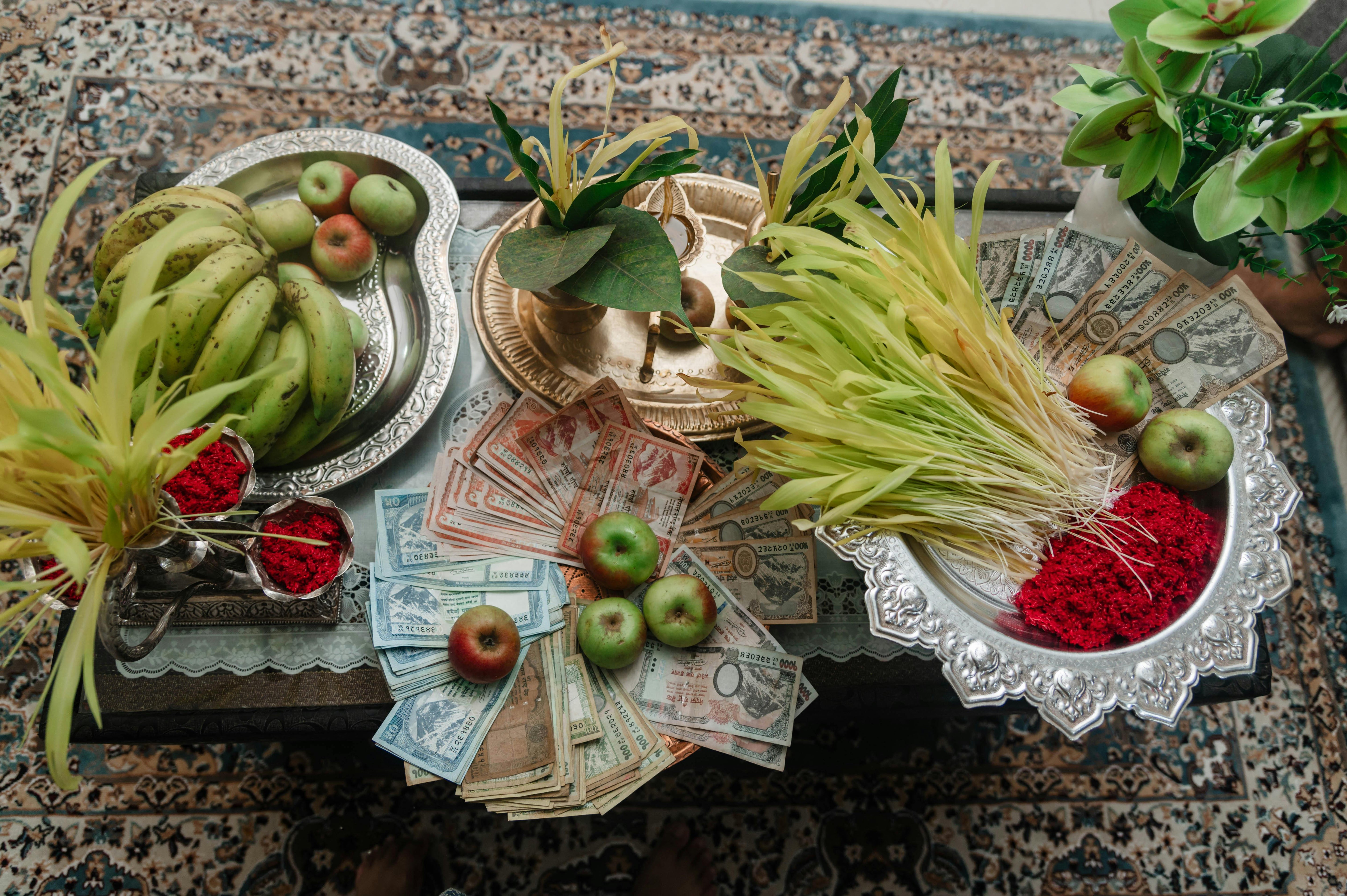Sacred Windows, Satirical Stories
The night before Yenyaa, one of Kathmandu’s most revered festivals, Chyasal comes alive. The lanes are filled with enthusiastic crowds, children perched on shoulders, old men steadying themselves on walking sticks, women teetering on low walls to catch a glimpse. A falchaa assists the weight of the eager crowd, while another hosts a circle of traditional singers serenading the women of the tole. Now and then, one or two women rise from their seats, their hands swaying, feet tapping, drawn into the rhythm. Faces crowd every window, strangers pressed against one another, all sharing the same anticipation. Some don’t know why everyone’s gathering, most know yet still they wait in unison, as their ancestors did, to see it unfold once more.
On the northeast window of the Awale Guthi Chapa, a white cloth hangs like a makeshift screen. A light flickers behind it. Then, shadows appear. A man, a woman, gestures etched in silhouette. They pray, they eat, they spin thread, they reach for each other. The scenes are wordless but heavy with meaning. This is Jhyalcha, the shadow play of Patan, performed on this very night for over three hundred years.
The story, as it goes, begins with a king Yog Narendra Malla of Patan once caught sight of a young woman bathing at the Chyasal well and took her as his second queen. The first queen, slighted, sought revenge. She had this play staged—“jhya” for window, “lcha” for show—turning her rival into shadow, her king’s desire into public spectacle. What began as a personal vendetta became tradition, a morality tale performed in silence, with satire.
Five scenes are shown in the play, each distinct yet tethered to one another. It begins with ritual—invoking a sense of the sacred. Then, a woman spins a thread, her movement both domestic and symbolic, weaving the fabric of what is to come. What follows is more unsettling: a forced coupling, presented without embellishment, its bluntness leaving little room for comfort. But the tone shifts as the same woman later seeks out intimacy on her own terms, her desire reclaiming agency from coercion. And then, as if closing a circle, the play returns to ritual once more.
What the silhouettes reveal and what the elders still whisper is that Jhyalcha was not just an act of worship. It was satire masked as ceremony, a critique wrapped in custom, a parody of power where devotion blurred into derision, and performance became a protest against a king’s unchecked lust. In the past, when there was no electricity, the dance was conjured with only firelight and imagination—boys playing both male and female roles, since women could not appear outside at night. Meaning was left to the silhouettes, the gestures, the audience’s understanding. What mattered was the act of showing, of putting the king’s appetite on display for all to see.
And so, in the night of the shadow play, as the figures move against cloth and the crowd murmurs, half in amusement, half in discomfort but the centuries old tale folds in on themselves. Just across the way, the temple of Bhairav, Nhyepdhya to the locals, keeps vigil. Bhairav, the warrior, the destroyer of enemies. Shadow and deity, lust and devotion, ridicule and reverence, everything and all of them believed to be sharing the same night sky.
When the screen finally empties and the shadows dissolve into darkness, the crowd lingers, as if reluctant to let go. Then, slowly, they drift back into the alleys of Chyasal, carrying with them the echoes of desire and derision, a memory older than their own lifetimes.




